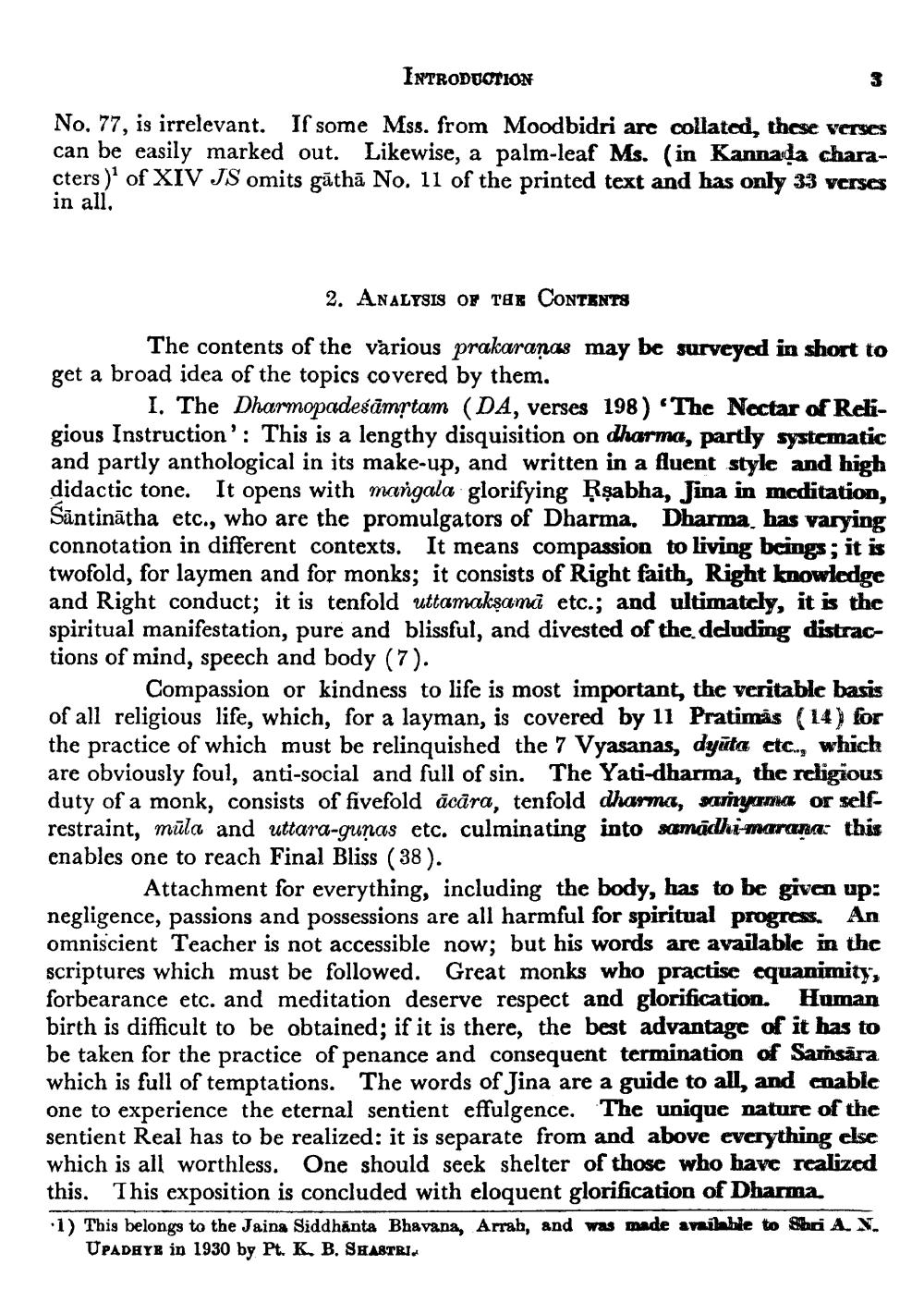________________
INTRODUCTION
No. 77, is irrelevant. If some Mss. from Moodbidri are collated, these verses can be easily marked out. Likewise, a palm-leaf Ms. (in Kannada characters) of XIV JS omits gāthā No. 11 of the printed text and has only 33 verses in all.
3
2. ANALYSIS OF THE CONTENTS
The contents of the various prakaranas may be surveyed in short to get a broad idea of the topics covered by them.
I. The Dharmopadesāmṛtam (DA, verses 198) 'The Nectar of Religious Instruction': This is a lengthy disquisition on dharma, partly systematic and partly anthological in its make-up, and written in a fluent style and high didactic tone. It opens with mangala glorifying Rṣabha, Jina in meditation, Santinatha etc., who are the promulgators of Dharma. Dharma, has varying connotation in different contexts. It means compassion to living beings; it is twofold, for laymen and for monks; it consists of Right faith, Right knowledge and Right conduct; it is tenfold uttamakṣamā etc.; and ultimately, it is the spiritual manifestation, pure and blissful, and divested of the deluding distractions of mind, speech and body (7).
Compassion or kindness to life is most important, the veritable basis of all religious life, which, for a layman, is covered by 11 Pratimas (14) for the practice of which must be relinquished the 7 Vyasanas, dyuta etc., which are obviously foul, anti-social and full of sin. The Yati-dharma, the religious duty of a monk, consists of fivefold ācāra, tenfold dharma, samyama or selfrestraint, mula and uttara-gunas etc. culminating into samadhi-marana: this enables one to reach Final Bliss (38).
Attachment for everything, including the body, has to be given up: negligence, passions and possessions are all harmful for spiritual progress. An omniscient Teacher is not accessible now; but his words are available in the scriptures which must be followed. Great monks who practise equanimity, forbearance etc. and meditation deserve respect and glorification. Human birth is difficult to be obtained; if it is there, the best advantage of it has to be taken for the practice of penance and consequent termination of Samsara which is full of temptations. The words of Jina are a guide to all, and enable one to experience the eternal sentient effulgence. The unique nature of the sentient Real has to be realized: it is separate from and above everything else which is all worthless. One should seek shelter of those who have realized this. This exposition is concluded with eloquent glorification of Dharma.
1) This belongs to the Jaina Siddhanta Bhavana, Arrah, and was made available to Shri A. N. UPADHYE in 1930 by Pt. K. B. SHASTRI




